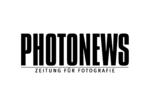Akinbode Akinbiyi (*1946 Oxford, England) has won the Hannah Höch Prize for 2024. Featuring some 120 photographs drawn from several series – two of these on show in Germany for the first time – the exhibition at the Berlinische Galerie offers insights into an oeuvre covering five decades. This first solo show for a German museum is the result of close collaboration with the artist.
The photographer and author of global renown, who has lived and worked in Berlin since 1991, wanders the megacities of this world capturing life on the streets. Berlin, Brasília, Durban, Lagos – urban space is his workstation. He experiences it as an “interminal labyrinth” or, as he phrased it in 2009, “a maze of never ending streets that coalesce into uncountable pathways”. Akinbiyi photographs what he observes, predominantly in analogue black-and-white. His pictures are visual metaphors rich in nuance, addressing cultural change and social exclusion but also the political, social and architectural impact of colonialism. In these images, he conveys a world view that shuns stereotyping and depicts without discrimination.
Akinbode Akinbiyi understands photography as a “writing with light”. His images are not planned. Instead he trusts to serendipity, trapping the moment with the lens of his analogue Rolleiflex. Diagonal, shifting perspectives highlight the mode of genesis, set to the rhythm of a walker moving through the city. The frame is defined by the solid square of a medium format. The atmosphere is dense: urban energy, smells and sounds seem to infuse the visual record. At the same time, these photographs are richly layered with poetry and themes; they invite us to read them, to untangle those compact layers. Akinbiyi selects from these individual shots to arrange his series, some of which evolve over decades.
Trailer
Series
Works from seven of those series are on show at the Berlinische Galerie.
The series “Photography, Tobacco, Sweets, Condoms, and Other Configurations” has been evolving since the 1970s during forays through urban landscapes around the world. Akinbiyi comes across vending machines, random arrangements in urban space. This series is also a reflection on how photographic images are presented and consumed.
In “Lagos: All Roads” Akinbiyi has been recording social inequalities in the exploding city since the 1980s and illustrating the persistent influence of colonial structures.
Akinbiyi has likewise been returning since the 1980s to Bar Beach in Lagos. Images in the long-term series “Sea Never Dry” show rituals from Yoruba religion infused with elements of Christianity alongside everyday life on the busy shoreline.
Akinbiyi began working on “African Quarter” just after moving to Berlin in 1991. His photographs from this part of the Wedding district observe not only a neighbourhood in the throes of sociopolitical change but also the many ways in which colonial history had been inscribed into its fabric and the contest around who defines meaning in urban space.
The images from “Oșogbo” were taken in 2016. Every 10 years or so, the artist attends the traditional festival outside this Nigerian city to honour the goddess Osun. In recent decades the event has become a magnet for tourists.
Unlike series that build over time, “eThekwini” was shot in 1993 just after apartheid ended in South Africa. It is one of the most socially critical series by Akinbiyi. In the metropolitan area of Durban he recorded various communities in an unequal society where decades of racist oppression have left a visible legacy.
“Black Spirituality” is the only colour series in this exhibition. In 2002 Akinbiyi turned his camera on the role played by religion in generating a sense of identity as West African culture survives and changes within the Brazilian diaspora.
Biography
Akinbode Akinbiyi has lived in Berlin since 1991 and works as a photographer, writer, teacher, mentor and curator. Born to Nigerian parents in Oxford in 1946, Akinbiyi grew up in England and Lagos, Nigeria. After graduating in English from Ibadan University in Nigeria he planned initially to become a writer. In 1969 he signed up for a course in English Literature at Lancaster University and from 1971 he studied German Philology at the University of Heidelberg. He was inspired by writers such as Chinua Achebe, Max Frisch, Bessie Head and Franz Kafka. That is how he developed his style of “literary seeing”, as he called it when looking back in 1980.
At the age of 26 he began taking photographs, then as now with an analogue twin-lens reflex camera. A reportage grant from the weekly magazine Stern in 1987 brought an opportunity to work in Dakar, Kano and Lagos. Although the resulting photographs
were not published, they boosted his reputation and career as a photographer. Photography, coupled with frequent essay-writing, became his vocation.
Akinbode Akinbiyi runs workshops around the world, passing on his knowledge of photographic practice. From 2008 until 2018 he joined Simon Njami, Mark Sealy, Bisi Silva and others to teach the Photographers’ Masterclass in a number of African countries, attended by more than fifty young artists from Africa, among them Mimi Cherono Ng’ok, Lebohang Kganye and Thabiso Sekgala.
Hannah Höch Prize
The Hannah Höch Prize for outstanding lifetime achievement in the field of art has been awarded by the Berlin Senate since 1996. It is bestowed on artists who have chosen Berlin as a base for their life and work and who stand out for their unwavering artistic quality. It comes with a purse of 25,000 euros and entitles the winner to an exhibition and a publication. The selection is made by a Committee for the Promotion of Fine Arts appointed by the Senate Department for Culture. Its members include representatives from the Berlinische Galerie, the Stiftung Stadtmuseum Berlin, the Kupferstichkabinett at the Staatliche Museen zu Berlin and the Neuer Berliner Kunstverein.










